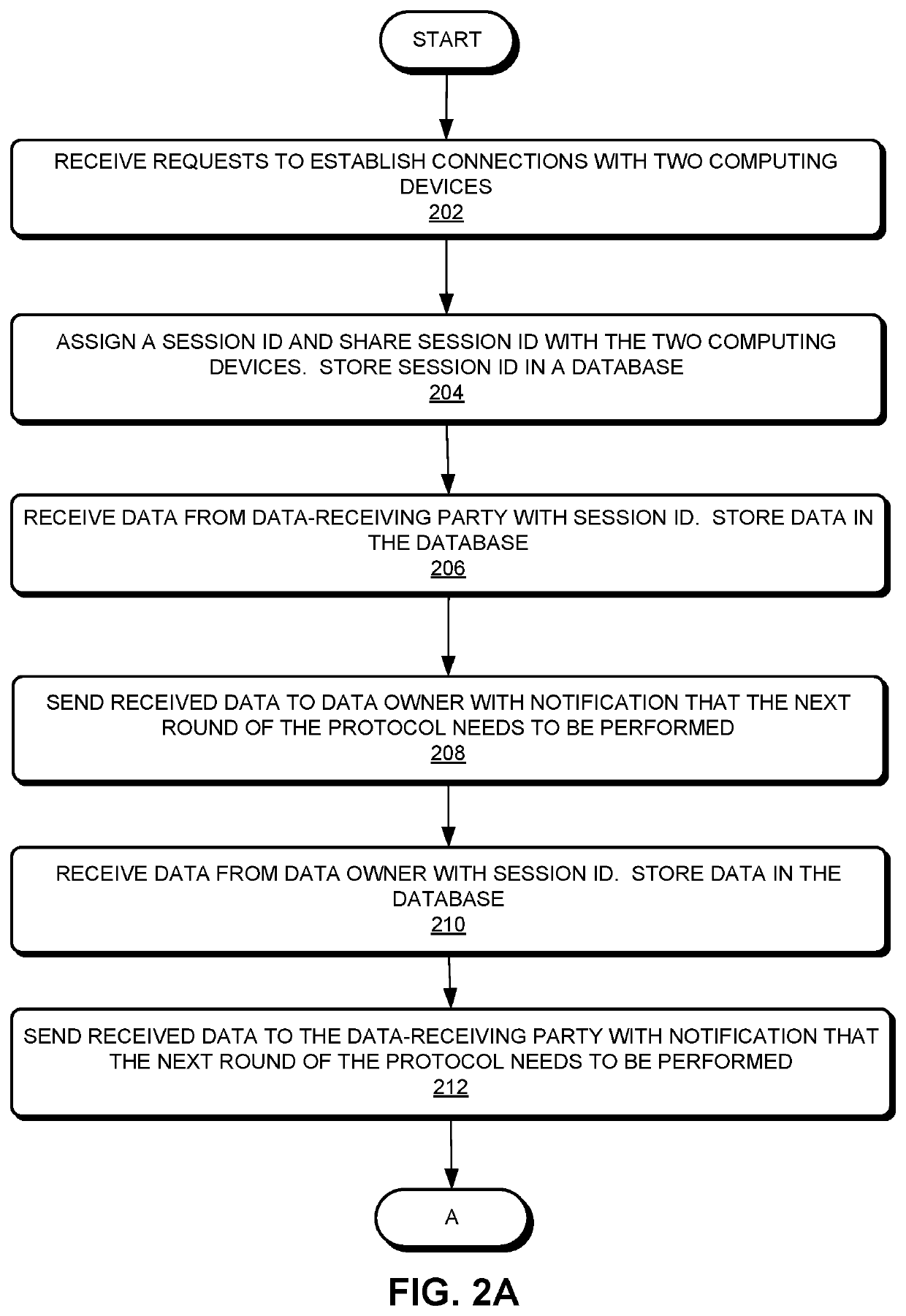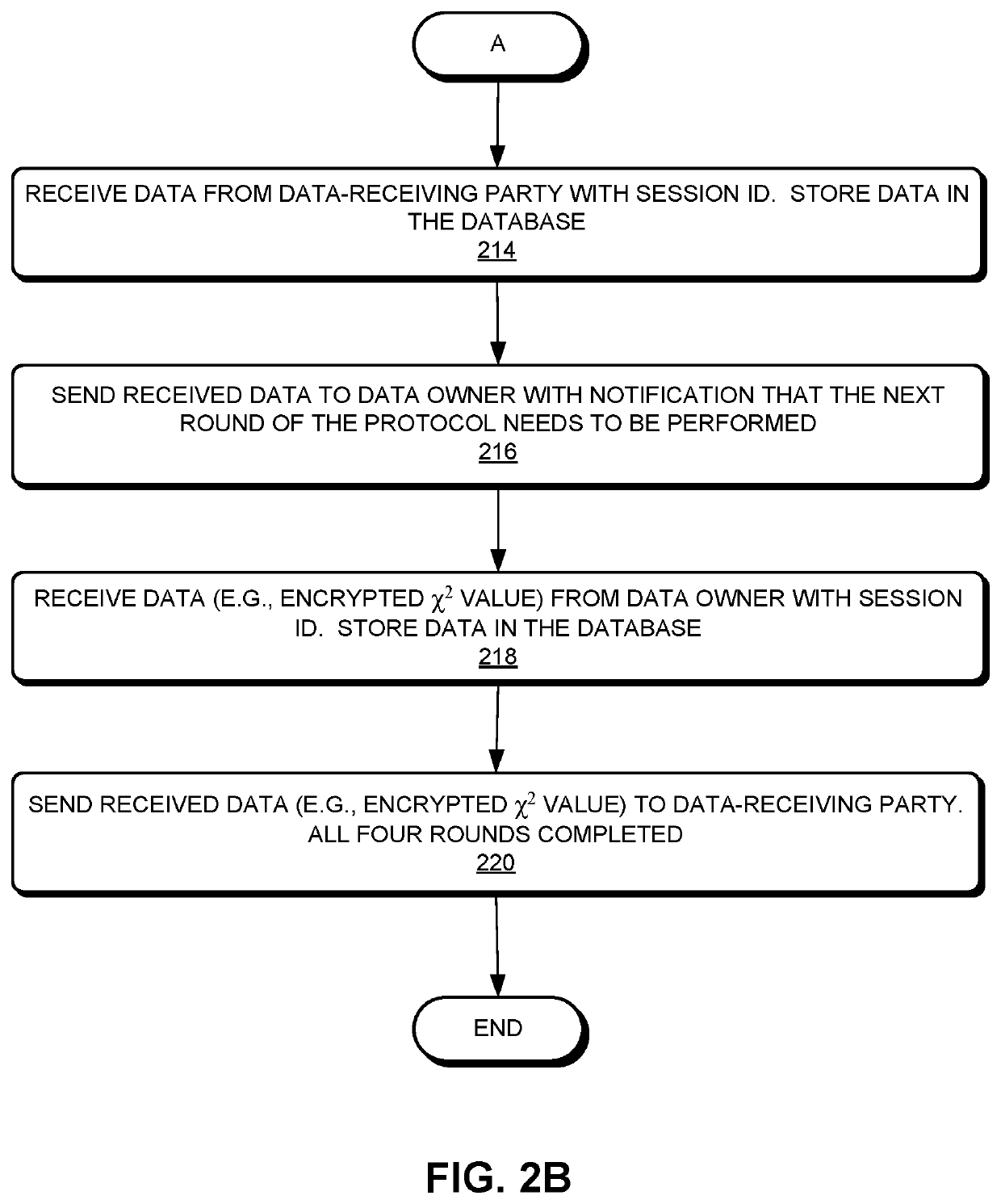System and method for secure two-party evaluation of utility of sharing data
a technology of sharing data and utility, applied in the field of machine learning, can solve the problems of data owner not wanting to reveal the content of data, difficult to identify trading partners, etc., and achieve the effect of improving the classifier
- Summary
- Abstract
- Description
- Claims
- Application Information
AI Technical Summary
Benefits of technology
Problems solved by technology
Method used
Image
Examples
example 1
[0096]In this example, a data-receiving party is interested in obtaining a column of data from a data owner. The data-receiving party intends to add the data to a data table, in order to improve a classifier trained using that table. The owner is willing to provide the data, but the data-receiving party is not certain that the data will actually improve the classifier. The data-receiving party has access to the data dictionary for the owner's data and they share a common index key, but the data-receiving party does not know the actual values of the data elements. The parties agree to use the protocol, with the data-receiving party performing round one. After following the protocol, the data-receiving party has a value for the χ2 statistic, which is a measure of the utility of the data the owner is willing to provide. Based on the value of χ2, along with any other information the data-receiving party considers important, the data-receiving party decides whether to obtain the data. In...
example 2
[0097]In this example, the parties agree to follow the protocol, but in two-stream mode. The two-stream mode begins with both parties computing and sending encrypted values in round one and both parties sending encrypted values of χ2 in round four. Since the computation for χ2 is symmetric with respect to c and f, both parties should end up with the same value of χ2, assuming they used the same data in both streams (i.e., did not cheat). For this example, there may be a fifth round in which each party, after decrypting χ2 with their own secret key, re-encrypts χ2 with a new, single-use key they generate. This single use key may be a symmetric encryption key. Then each party sends their re-encrypted χ2 to the other party. Each party may also send the one-use key, but only after receiving the re-encrypted χ2 message from the other party. They are doing this exchange of re-encrypted χ2 and the associated single-use key to verify that they are both looking at the same value of χ2.
[0098]...
example 3
[0099]In this example, the owner of the data is willing to provide access to a feature column (e.g., by selling, licensing, trading, and / or transferring), but the owner is limiting the number of recipients (e.g., licensees) to a small number n, such as n=5 or n=2. In this example, the owner may want to choose the receiving parties that will get the highest utility out of the data. A data owner and / or data-receiving party may want to limit the number of data recipients (e.g., licensees) to minimize the risk to sensitive data (more recipients means more things can go wrong). A data owner and / or data-receiving party may also want to maximize the value to data-receiving parties by guaranteeing to keep the data from their competitors and the public at large. Data is often more valuable and / or useful when access to it is limited. In this example, the parties may agree to follow the protocol, but using the two-stream mode described in the previous example. In some use case scenarios, the d...
PUM
 Login to View More
Login to View More Abstract
Description
Claims
Application Information
 Login to View More
Login to View More - R&D
- Intellectual Property
- Life Sciences
- Materials
- Tech Scout
- Unparalleled Data Quality
- Higher Quality Content
- 60% Fewer Hallucinations
Browse by: Latest US Patents, China's latest patents, Technical Efficacy Thesaurus, Application Domain, Technology Topic, Popular Technical Reports.
© 2025 PatSnap. All rights reserved.Legal|Privacy policy|Modern Slavery Act Transparency Statement|Sitemap|About US| Contact US: help@patsnap.com



